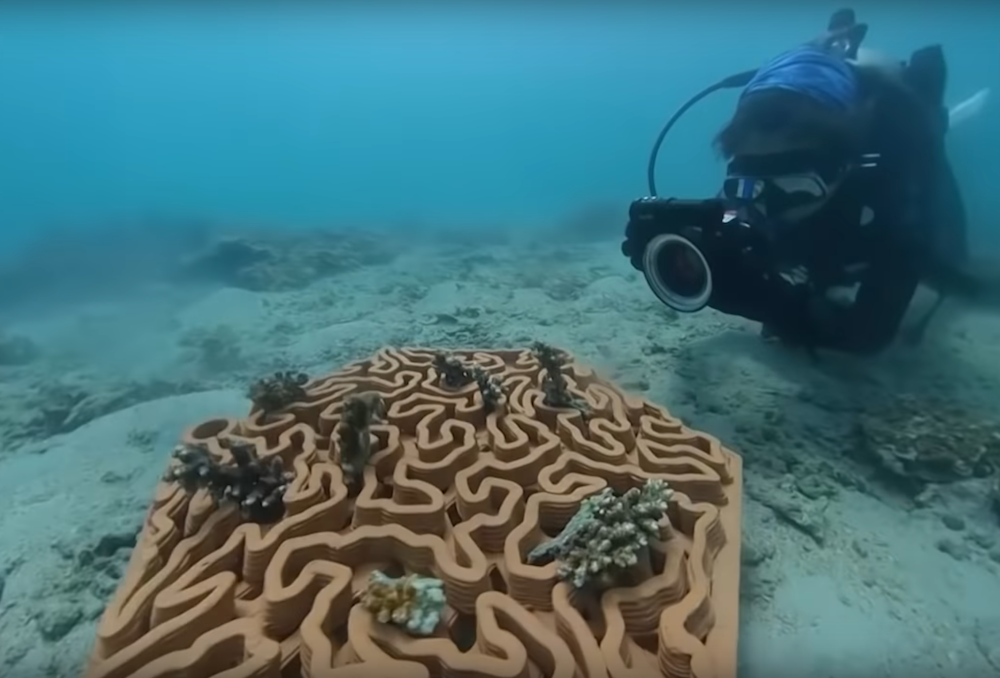
[Image above] Marine scientists and architects at the University of Hong Kong created these clay tiles as supports for growing new coral to replace that destroyed during Typhoon Mangkhut in 2018. Credit: South China Morning Post, YouTube
My family typically tries to coordinate vacations so that we can all travel together, but during a busy college finals season in 2015, I watched with jealously when my dad traveled to Australia for a week to take a scuba diving trip on the Great Barrier Reef.
My dad has wanted to dive on the Great Barrier Reef for years—he was an avid diver during his college years—but recent events gave him the urgency to finally schedule the trip. Specifically, the 2014–2017 global-scale coral bleaching event.
During this unprecedented period of successive record-breaking hot years, more than 75% of global reefs experienced mass heat stress and nearly 30% reached mortality levels, according to the NOAA Office for Coastal Management. Early this year, scientists reported another mass bleaching event, this one larger in scale and second only to the year 2016 in intensity.
The extreme bleaching extremely worries scientists because once corals die, reefs rarely come back. And without coral reefs, many marine animals will lose their homes, coastal communities will lose protection from flooding, and people who rely on reef fisheries for food and income will go hungry, among other adverse events. So restoring coral reefs damaged by bleaching as well as ocean acidification and pollution is an important task for marine researchers.
Among the numerous approaches to restoration, one method called structural restoration involves introducing artificial structures into areas where the reef was lost due to disturbances such as blast fishing, boat grounding, dredging, and landslides. In such circumstances, the seafloor is reduced to rubble or sand, and coral cannot attach to these loose surfaces. The artificial structures provide a solid surface to which the coral can attach.
To create these artificial structures, a team of marine scientists and architects at the University of Hong Kong recently explored using 3D printing to fabricate structurally complex clay tiles. They initially considered using concrete or metal, but they decided on terracotta clay because it is more environmentally friendly.
In July of this year, the researchers seeded the almost 2-foot wide hexagonal tiles with three species of coral fragments (Acropora, Platygyra, and Pavona) and then planted 128 tiles at three different sites in Hong Kong’s Hoi Ha Wan Marine Park. They chose this marine park because, in 2018, Typhoon Mangkhut destroyed nearly 80% of the coral reefs in the Hoi Ha Wan bay, which is home to 60 species of coral reefs as well as 120 fish species.
After two months, the scientists observed that 100% of the coral on the tiles still thrived. They plan to continue monitoring the site for the next one and a half years.
Learn more about fabrication and placement of these tiles in the video below.
